Samsung Galaxy Z Fold 4 vs. iPhone 13 Pro Max: A Comprehensive Comparison
The smartphone market is ever-evolving, with manufacturers pushing the boundaries of innovation and design. Two flagship devices that epitomize the pinnacle of modern smartphone technology are the Samsung Galaxy Z Fold 4 and the Apple iPhone 13 Pro Max. While both are premium devices, they cater to different user needs and preferences. The Z Fold 4 is Samsung’s foldable marvel, offering a tablet-like experience in a pocketable form, whereas the iPhone 13 Pro Max is Apple’s powerhouse, known for its performance, camera prowess, and ecosystem integration.
In this article, we’ll delve deeply into each device, comparing them across various parameters to help you decide which flagship suits you best.
1. Design and Build Quality
Samsung Galaxy Z Fold 4
The Z Fold 4 represents Samsung’s fourth generation of foldable phones, showcasing refinements in durability and usability. The device features a book-like fold, with a 6.2-inch cover display and a 7.6-inch main display when unfolded. Samsung has improved the hinge mechanism, making it more robust and less prone to dust and debris. The device uses Gorilla Glass Victus+ on the cover screen and back, while the main display employs Samsung’s Ultra Thin Glass, topped with a plastic layer for flexibility.
Despite its innovative design, the Fold 4 is relatively heavy (263g) and thick when folded (15.8mm), but it feels premium in hand. Its IPX8 water resistance rating is a significant step up for foldables, though it still lacks dust resistance due to the hinge mechanism.
iPhone 13 Pro Max
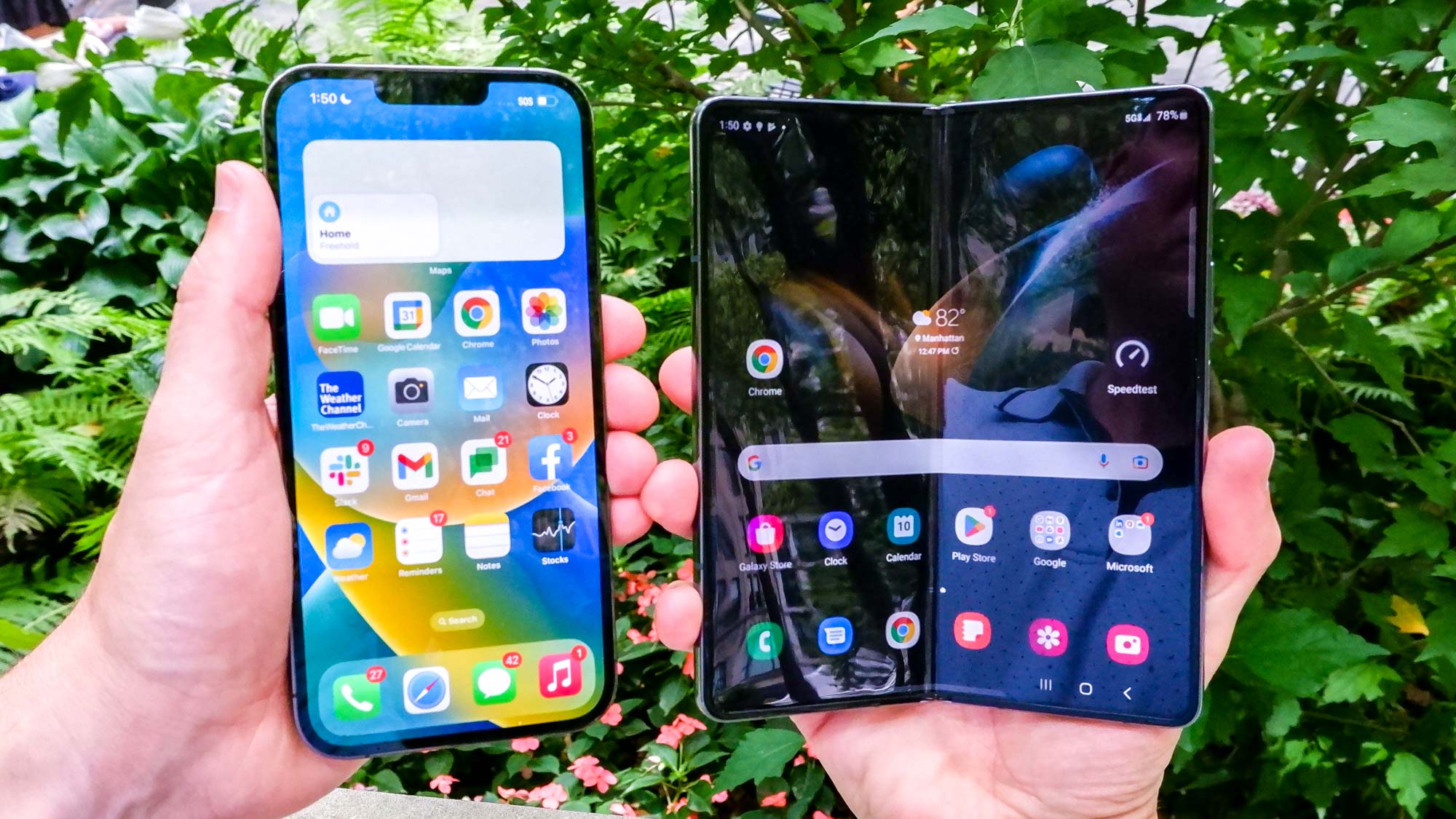
Apple’s design philosophy is about refinement and elegance. The iPhone 13 Pro Max features a stainless steel frame, Ceramic Shield front, and a textured matte glass back. At 238g and 7.7mm thick, it’s hefty but more traditionally shaped than the Fold 4. The device is IP68 rated for dust and water resistance, giving it an edge in ruggedness.
Apple’s attention to detail is evident in the precision of the build, the tactile buttons, and the minimalistic aesthetic. The flat edges and squared-off design make it stand out among competitors.
Verdict
Z Fold 4: Innovative, futuristic, but bulkier.
iPhone 13 Pro Max: Classic, refined, and more universally practical.2. Display
Samsung Galaxy Z Fold 4
The Z Fold 4’s main attraction is its display technology. The 7.6-inch inner AMOLED display boasts a 2176 x 1812 resolution, 120Hz adaptive refresh rate, HDR10+ support, and up to 1200 nits peak brightness. The crease, though visible, is less pronounced than previous generations. The 6.2-inch cover display is also AMOLED, 120Hz, and offers a 2316 x 904 resolution.
The large, immersive inner screen is perfect for multitasking, media consumption, and productivity. Samsung’s software optimizations enable seamless app continuity and multi-window support.
iPhone 13 Pro Max
Apple’s Super Retina XDR OLED display measures 6.7 inches, with a resolution of 2778 x 1284 pixels, 120Hz ProMotion refresh rate, HDR10, Dolby Vision, and up to 1200 nits peak brightness. The display is flat, vibrant, color-accurate, and extremely responsive. Apple’s True Tone and color calibration are industry-leading.
While the iPhone lacks the novelty of folding, its display quality is arguably the best in the business for a traditional smartphone.
Verdict
Z Fold 4: Best for multitasking and immersive experiences.
iPhone 13 Pro Max: Best for color accuracy and overall display quality in a traditional form factor.
3. Performance
Samsung Galaxy Z Fold 4
Powered by the Qualcomm Snapdragon 8+ Gen 1 (in all markets), paired with 12GB RAM and up to 1TB storage, the Z Fold 4 is a powerhouse. It handles multitasking, gaming, and productivity with ease. Samsung’s One UI is optimized for the foldable experience, allowing for split-screen multitasking and floating windows.
iPhone 13 Pro Max
Apple’s A15 Bionic chip, with its 6-core CPU and 5-core GPU, is arguably the most powerful mobile processor at launch. Paired with 6GB RAM and up to 1TB storage, the iPhone 13 Pro Max delivers blistering performance, efficiency, and unmatched longevity in software updates.
iOS is highly optimized, ensuring smooth animations, app launches, and overall responsiveness.
Benchmarks
Z Fold 4: Excellent for Android, especially in multitasking and gaming.
iPhone 13 Pro Max: Industry-leading performance, especially in single-core tasks and sustained performance.
4. Software Experience

Samsung Galaxy Z Fold 4
Runs on Android 12L (optimized for large screens) with Samsung’s One UI 4.1.1. The software is tailored for foldables, offering features like App Continuity, Flex Mode, and advanced multitasking. Samsung’s DeX mode turns the device into a desktop-like experience when connected to external displays.
Samsung promises up to four years of major Android updates and five years of security patches.
iPhone 13 Pro Max
Runs on iOS 15 (upgradable to newer versions). iOS is known for its stability, security, and seamless integration with the Apple ecosystem (Mac, iPad, Watch, AirPods). Features like FaceTime, iMessage, AirDrop, and Handoff create a cohesive user experience.
Apple typically supports its devices for five to six years with major updates.
Verdict
Z Fold 4: Best for those who value customization, multitasking, and flexibility.
iPhone 13 Pro Max: Best for those who value simplicity, security, and ecosystem integration.
5. Camera System
Samsung Galaxy Z Fold 4
Triple rear cameras:
50MP main (f/1.8, OIS)
12MP ultra-wide (f/2.2)
10MP telephoto (3x optical zoom, f/2.4)
Front cameras:
10MP cover display selfie
4MP under-display camera (inner screen)
The Z Fold 4’s camera system is a significant upgrade over its predecessor. The main sensor captures detailed, vibrant images with good dynamic range. The ultra-wide and telephoto are versatile, though the under-display camera is only suitable for video calls due to its lower quality.
iPhone 13 Pro Max
Triple rear cameras:
12MP main (f/1.5, OIS)
12MP ultra-wide (f/1.8)
12MP telephoto (3x optical zoom, f/2.8)
Front camera:
12MP TrueDepth
Apple’s camera system is renowned for its consistency, color science, and computational photography. Features like Photographic Styles, ProRAW, ProRes video, and Cinematic Mode make it a favorite among content creators. Night mode, Deep Fusion, and Smart HDR 4 ensure excellent performance in all lighting conditions.
Verdict
Z Fold 4: Versatile, innovative, but not quite at the iPhone’s level for photography.
iPhone 13 Pro Max: Best-in-class for photography and videography, especially for pros.6. Battery Life and Charging
Samsung Galaxy Z Fold 4
Battery: 4400mAh dual-cell
Charging: 25W wired, 15W wireless, 4.5W reverse wireless
The Z Fold 4’s battery life is decent, considering its large, high-refresh-rate displays. It typically lasts a full day with moderate use, but heavy multitasking or gaming can drain it faster. Charging speeds are moderate compared to some Android rivals.
iPhone 13 Pro Max
Battery: 4352mAh
Charging: 27W wired, 15W MagSafe wireless, 7.5W Qi wireless
The iPhone 13 Pro Max is a battery champion, often lasting well into a second day on a single charge. iOS optimization, efficient hardware, and a slightly smaller display contribute to its endurance. Charging speeds are adequate, and MagSafe adds convenience.
Verdict
Z Fold 4: Good, but not exceptional due to power-hungry display.
iPhone 13 Pro Max: Outstanding battery life and reliable charging.
7. Additional Features
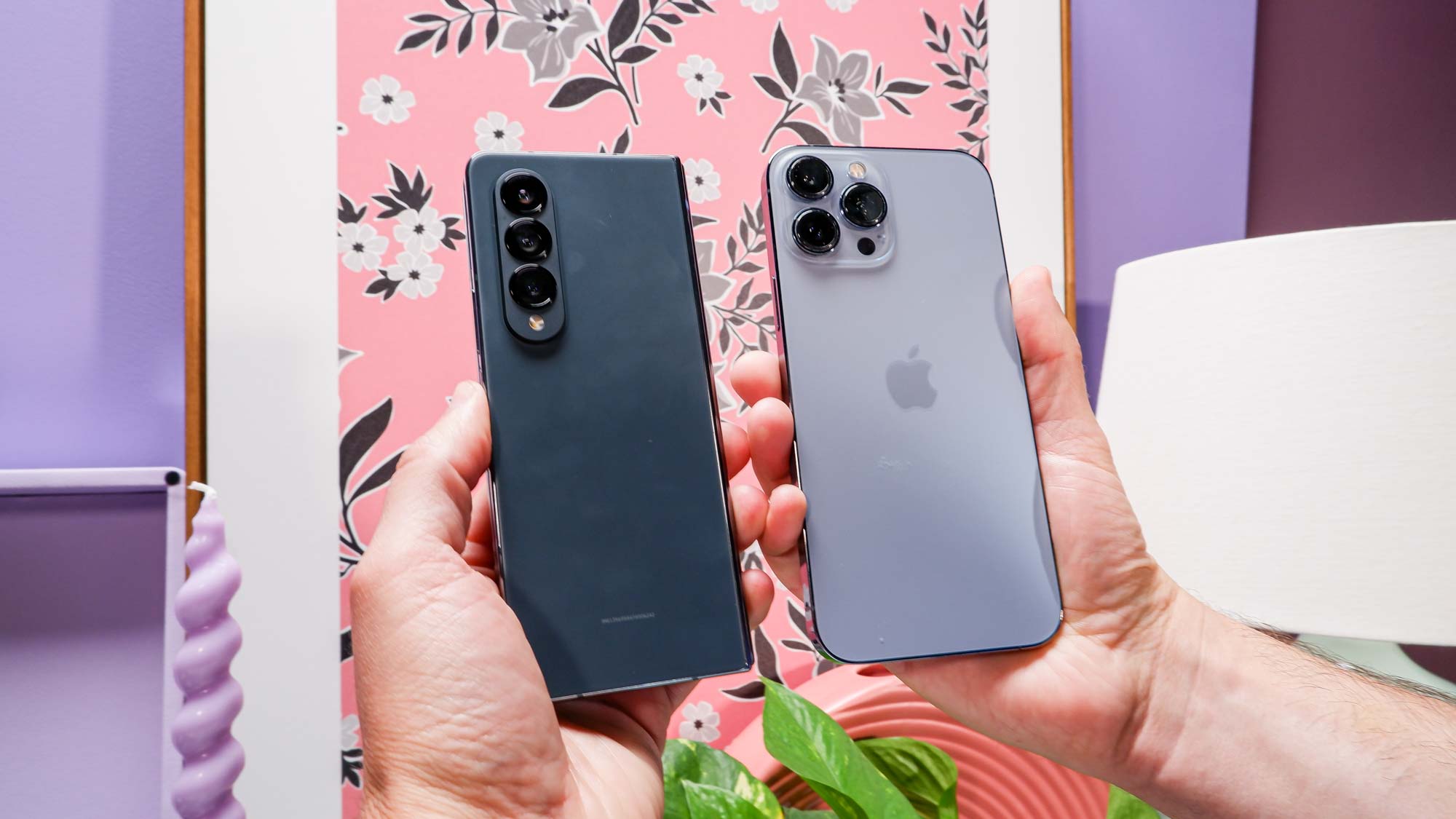
Samsung Galaxy Z Fold 4
S Pen support (sold separately) for note-taking and drawing
Flex Mode for hands-free video calls and content consumption
DeX mode for desktop-like experience
Dual SIM + eSIM support
Expandable storage: No
Audio: Stereo speakers, no headphone jack
iPhone 13 Pro Max
Face ID for secure authentication
MagSafe for accessories and wireless charging
Dual SIM (nano + eSIM)
No expandable storage
Audio: Stereo speakers, no headphone jack
Verdict
Z Fold 4: More productivity features, especially for power users.
iPhone 13 Pro Max: Simpler, more refined features, with strong ecosystem support.
8. Price and Value
Samsung Galaxy Z Fold 4
Launched at a premium price point (starting around $1,799 USD), the Z Fold 4 is one of the most expensive smartphones on the market. The price reflects its cutting-edge technology, but may be prohibitive for many.
iPhone 13 Pro Max
Launched at a starting price of $1,099 USD (for the base model), the iPhone 13 Pro Max is more affordable than the Fold 4, though still a premium device. Apple’s resale value and support are industry-leading.
Verdict
Z Fold 4: Expensive, but offers a unique experience.
iPhone 13 Pro Max: Expensive, but better value retention and wider appeal.
9. Ecosystem and Compatibility
Samsung Galaxy Z Fold 4
Works best with other Samsung and Android devices (Galaxy Buds, Galaxy Watch, SmartThings). Integration with Windows PCs (via Link to Windows) is strong, but the overall ecosystem is less cohesive than Apple’s.
iPhone 13 Pro Max
Part of the Apple ecosystem, which is unmatched in terms of seamless integration between devices (Mac, iPad, Apple Watch, AirPods, HomePod). Features like Handoff, Universal Clipboard, and AirDrop enhance productivity and convenience.
Verdict
Z Fold 4: Great for Android users, especially those invested in Samsung’s ecosystem.
iPhone 13 Pro Max: The best choice for those already in the Apple ecosystem.
10. User Experience and Use Cases
Samsung Galaxy Z Fold 4
Ideal for power users, multitaskers, and tech enthusiasts who want the latest and greatest. The foldable display is perfect for productivity, reading, media consumption, and multitasking. However, it’s bulkier and may not appeal to everyone.
iPhone 13 Pro Max
Perfect for users who want a reliable, powerful, and polished smartphone experience. Its camera, battery life, and performance make it suitable for professionals, creatives, and everyday users alike.
Verdict
Z Fold 4: Best for those who want innovation and multitasking.
iPhone 13 Pro Max: Best for those who want reliability and simplicity.
Both the Samsung Galaxy Z Fold 4 and the iPhone 13 Pro Max are exceptional devices, representing the best of what their respective brands have to offer. Your choice comes down to priorities:
Choose the Z Fold 4 if:
You want a foldable device for multitasking and productivity.
You’re excited by innovation and don’t mind a bit of bulk.
You want S Pen support and advanced multitasking features.
Choose the iPhone 13 Pro Max if:
You value camera quality, battery life, and ecosystem integration.
You prefer a more traditional, reliable smartphone experience.
You’re already invested in Apple’s ecosystem.
In the end, both devices are worthy flagships, pushing the boundaries of what smartphones can do. Your personal preferences, workflow, and ecosystem investments will ultimately determine which is the best fit for you.
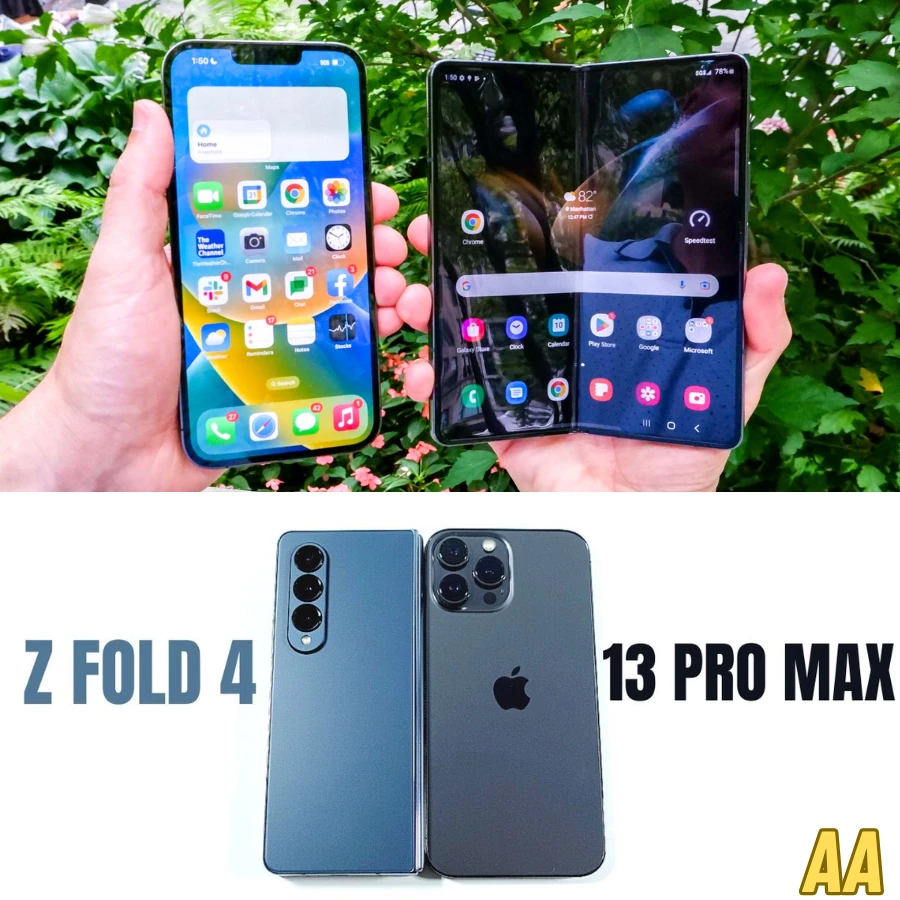
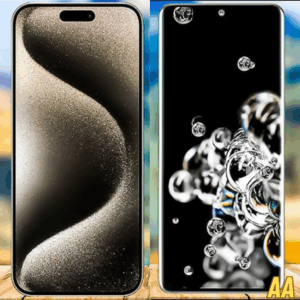

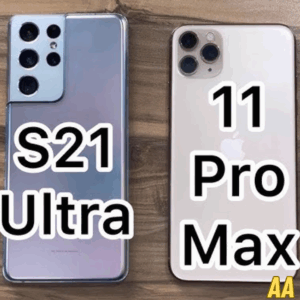
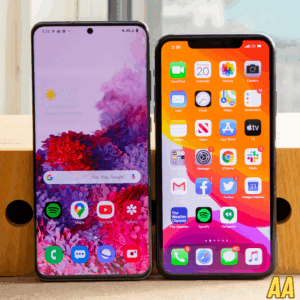
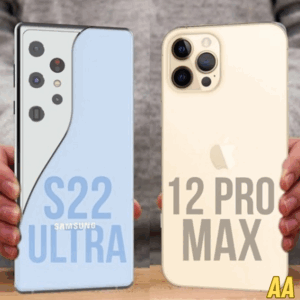

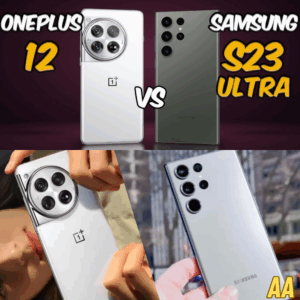
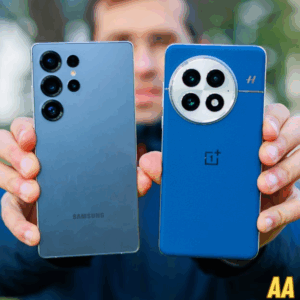
Trackbacks and Pingbacks